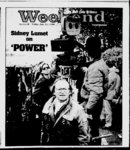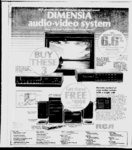Pages | 17 of 75
Salt Lake Tribune | 1986-01-24 | Page 17
| Type | issue |
| Date | 1986-01-24 |
| Paper | Salt Lake Tribune |
| Language | eng |
| City | Salt Lake City |
| County | Salt Lake |
| Rights | In Copyright (InC) |
| Rights Holder | The Salt Lake Tribune, Salt Lake City, Utah |
| Publisher | Digitized by J. Willard Marriott Library, University of Utah |
| ARK | ark:/87278/s6bs4c69 |
| Reference URL | https://newspapers.lib.utah.edu/ark:/87278/s6bs4c69 |
Page Metadata
| Type | page |
| Date | 1986-01-24 |
| Paper | Salt Lake Tribune |
| Language | eng |
| City | Salt Lake City |
| County | Salt Lake |
| Page | 17 |
| Reference URL | https://newspapers.lib.utah.edu/ark:/87278/s6bs4c69/29249776 |













































































